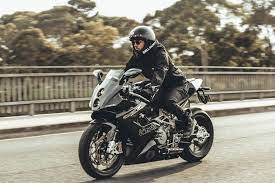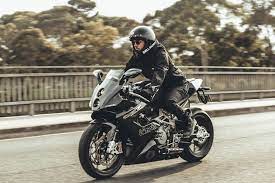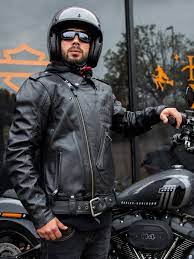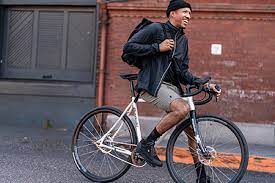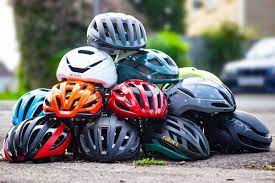Embrace the Warmth: Discover the Benefits of Heated Riding Gear for Your Motorcycle Adventures
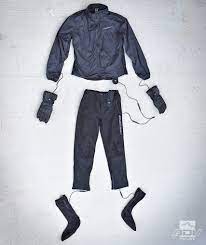
Heated Riding Gear: Embrace Comfort and Warmth on Your Motorcycle Adventures
As the temperature drops and the chill of winter sets in, motorcycle enthusiasts face a dilemma: how to stay warm and comfortable while still enjoying their two-wheeled adventures. Thankfully, advancements in technology have brought us heated riding gear, a game-changer for riders seeking to extend their riding season and conquer the cold.
Heated riding gear, such as heated jackets, gloves, pants, and socks, utilizes innovative heating elements strategically placed throughout the garments. These elements generate warmth that can be adjusted to suit your preferences, ensuring you stay cozy even in the harshest weather conditions.
One of the most significant advantages of heated riding gear is its ability to provide consistent warmth. Gone are the days of layering up with bulky clothing that restricts movement and adds unnecessary weight. With heated gear, you can experience a level of comfort that allows for unrestricted mobility while still keeping you snug and warm.
The versatility of heated riding gear is another reason why it has gained popularity among motorcyclists. The heating elements are often powered by rechargeable batteries or connected directly to your motorcycle’s electrical system. This means you can enjoy hours of warmth without worrying about running out of power. Additionally, many heated gear options come with adjustable settings so that you can customize the level of heat according to your preferences or changing weather conditions.
Safety is always a top priority for riders, and heated gear addresses this concern as well. When your body is exposed to extreme cold temperatures for an extended period, it can lead to reduced dexterity and slower reaction times. By keeping yourself warm with heated gloves or jackets, you maintain optimal control over your motorcycle and enhance your overall safety on the road.
Heated riding gear isn’t limited to just winter use either. It can be a valuable asset during chilly autumn or spring rides when temperatures fluctuate unexpectedly. The ability to regulate your body temperature with the touch of a button ensures that you remain comfortable throughout your journey, regardless of the weather conditions.
Investing in heated riding gear is an investment in your riding experience. It allows you to extend your riding season and explore new destinations without being limited by cold weather. Whether you’re a daily commuter, an adventure seeker, or simply enjoy leisurely rides on weekends, heated gear can significantly enhance your overall enjoyment on the road.
When shopping for heated riding gear, it’s essential to choose products from reputable brands known for their quality and durability. Look for features such as adjustable heat settings, quick heating capabilities, and ergonomic design to ensure maximum comfort and functionality.
In conclusion, heated riding gear has revolutionized the way motorcyclists tackle cold weather conditions. By providing consistent warmth, versatility, enhanced safety, and year-round usability, it has become an indispensable companion for riders seeking comfort during their adventures. Embrace the benefits of heated gear and embark on your next motorcycle journey with confidence, knowing that warmth and comfort are just a click away.
8 Frequently Asked Questions About Heated Riding Gear: Everything You Need to Know
- What are the benefits of wearing heated riding gear?
- How does heated riding gear work?
- What type of heated riding gear is best for me?
- How do I know which size of heated riding gear to buy?
- How long will my heated riding gear last?
- Where can I buy quality heated riding gear?
- Are there any safety considerations with using heated riding gear?
- Does wearing heated riding gear make a difference in cold weather conditions?
What are the benefits of wearing heated riding gear?
Wearing heated riding gear offers several benefits for motorcycle enthusiasts, especially in cold weather conditions. Here are some key advantages:
- Comfort and Warmth: The primary benefit of heated riding gear is the ability to stay warm and comfortable while riding in chilly temperatures. The heating elements strategically placed throughout the garments provide consistent warmth, allowing riders to maintain a comfortable body temperature even in freezing conditions.
- Extended Riding Season: Heated gear enables riders to extend their riding season beyond the typical warm months. By staying warm, riders can continue enjoying their two-wheeled adventures during autumn, winter, and early spring when temperatures would otherwise be too cold for comfort.
- Customizable Heat Levels: Most heated gear comes with adjustable heat settings, allowing riders to control the level of warmth according to their preferences or changing weather conditions. This customization ensures optimal comfort without overheating or feeling too cold.
- Enhanced Safety: When exposed to extreme cold temperatures for prolonged periods, our bodies can experience reduced dexterity and slower reaction times. Heated riding gear helps combat this by keeping riders warm, maintaining blood circulation, and ensuring optimal control over the motorcycle. By improving comfort and focus, heated gear contributes to overall safety on the road.
- Versatility: Heated gear is not limited to just jackets; it extends to gloves, pants, socks, and other accessories as well. This versatility allows riders to keep different parts of their body warm as needed while maintaining flexibility and unrestricted movement.
- Battery-Powered or Electrical Connection Options: Heated riding gear is designed with convenience in mind. It can be powered by rechargeable batteries or connected directly to a motorcycle’s electrical system for continuous heating during longer rides.
- All-Weather Use: While commonly associated with colder seasons, heated gear can also be beneficial during rides where temperatures fluctuate unexpectedly or when encountering chilly evenings even in warmer months.
- Lightweight and Minimal Bulk: Heated gear eliminates the need for layering up with bulky clothing to stay warm. The heating elements are integrated into the garments, providing warmth without compromising mobility or adding unnecessary weight.
- Durability and Quality: Reputable brands offer high-quality heated riding gear designed to withstand the rigors of motorcycle riding. These products are built to last, ensuring long-term reliability and performance.
By embracing heated riding gear, motorcyclists can experience increased comfort, safety, and enjoyment during their rides, regardless of the weather conditions. It opens up new possibilities for exploration and adventure while keeping riders warm and protected on the road.
How does heated riding gear work?
Heated riding gear operates on the principle of using heating elements to generate warmth and distribute it throughout the garment. These heating elements are typically made of thin, flexible wires or carbon fiber materials that have a high resistance to electricity.
The heating elements are strategically placed in specific areas of the gear, such as the back, chest, arms, legs, or fingers, depending on the type of gear. They are designed to provide targeted heat to areas that are most susceptible to cold temperatures and where riders need it the most.
To power the heating elements, there are two common methods:
1. Battery-powered: Many heated riding gear options come with rechargeable batteries that can be easily attached or stored in pockets within the garment. These batteries supply electrical energy to the heating elements and allow for cordless operation. The batteries can typically last for several hours on a single charge, depending on the heat setting used.
2. Electrical system connection: Some heated gear can be directly connected to your motorcycle’s electrical system using a power cord. This allows you to draw power from your bike’s battery while riding. It is important to ensure that your motorcycle has an appropriate electrical output and that you follow manufacturer instructions for safe and proper installation.
Once powered, the heating elements produce heat through resistance when an electric current passes through them. The amount of heat generated is controlled by an integrated controller or switch that allows you to adjust the temperature settings according to your comfort level or weather conditions.
The generated heat is then evenly distributed throughout the garment by specially designed insulation layers or fabric materials with good thermal conductivity. This ensures that warmth is spread across all targeted areas effectively.
It’s worth noting that modern heated riding gear often incorporates advanced technology like temperature sensors and safety features such as automatic shut-off systems or overheat protection mechanisms. These features help prevent overheating and ensure a safe and comfortable experience for riders.
Overall, heated riding gear combines innovative design with reliable heating elements and power sources to provide riders with warmth and comfort during cold weather conditions. Whether you’re cruising on a chilly winter day or embarking on an adventure in cooler climates, heated riding gear can make all the difference in keeping you cozy and allowing you to fully enjoy your motorcycle journey.
What type of heated riding gear is best for me?
The best type of heated riding gear for you depends on your specific needs, preferences, and riding style. Here are some popular options to consider:
- Heated Jackets: Heated jackets are a versatile choice that provides warmth to your core. Look for jackets with adjustable heat settings, insulation for wind resistance, and heating elements strategically placed in key areas like the chest, back, and collar.
- Heated Gloves: Keeping your hands warm and nimble is crucial for safe riding. Heated gloves offer direct heat to your fingers and palms, ensuring optimal dexterity while protecting against cold temperatures. Look for gloves with heating elements along the fingers and back of the hand, as well as features like touchscreen compatibility and waterproofing.
- Heated Pants/Liners: If you want full-body warmth, heated pants or liners can be a great addition to your gear. These garments typically feature heating elements in the thighs and lower back area. They can be worn under your regular riding pants or as standalone pants.
- Heated Socks: Cold feet can quickly ruin a ride, so heated socks are worth considering if you struggle with keeping your feet warm. Look for socks with heating elements around the toes and soles, as well as moisture-wicking properties to keep your feet dry.
- Heated Vests/Waistcoats: For riders who prefer layering their own clothing but still want core warmth, heated vests or waistcoats are an excellent choice. These garments provide heat directly to the chest and back areas while allowing you to wear them over or under other clothing layers.
When choosing heated riding gear, it’s important to consider factors such as power source (battery-powered vs. connected to your motorcycle’s electrical system), battery life or power consumption, ease of use (adjustable settings), durability, comfort features (such as breathable materials), and safety certifications (like CE approval).
Additionally, it’s always a good idea to read reviews, seek recommendations from fellow riders, and try on different options to ensure the gear fits well and meets your requirements.
Remember that heated riding gear is an investment in your comfort and enjoyment on the road. Consider your riding habits, climate conditions, and personal preferences when selecting the best type of heated gear for you.
How do I know which size of heated riding gear to buy?
Choosing the right size of heated riding gear is crucial to ensure a comfortable and effective fit. Here are some steps to help you determine the correct size:
- Consult the Size Chart: Most reputable manufacturers provide detailed size charts for their products. These charts typically include measurements for chest, waist, hips, sleeve length, and inseam. Take accurate measurements of your body using a tape measure and compare them to the manufacturer’s size chart.
- Consider Layering: Keep in mind that heated gear is often designed to be worn as a mid-layer, so you may need to account for any additional layers you plan to wear underneath. If you typically wear thicker base layers or multiple clothing layers, it’s advisable to choose a slightly larger size to accommodate them comfortably.
- Read Customer Reviews: Customer reviews can offer valuable insights into the sizing of specific heated gear products. Look for reviews from individuals with similar body types or measurements as yours to get an idea of how the product fits in real-world scenarios.
- Check for Adjustability: Some heated gear items come with adjustable features like straps, zippers, or stretch panels that allow for a more personalized fit. These adjustable elements can help fine-tune the fit if you’re between sizes or have specific fitting preferences.
- Seek Expert Advice: If you’re unsure about sizing or have specific concerns, don’t hesitate to reach out to customer support or contact the manufacturer directly. They can provide guidance based on their product’s specifications and any unique considerations you may have.
Remember that proper fit is crucial for optimal performance and comfort when it comes to heated riding gear. It ensures that the heating elements are in close contact with your body and distribute warmth evenly throughout the garment.
By following these steps and taking accurate measurements, you can confidently select the appropriate size of heated riding gear that will keep you warm and comfortable on your motorcycle adventures.
How long will my heated riding gear last?
The lifespan of heated riding gear can vary depending on several factors, including the quality of the product, frequency of use, and how well it is maintained. Generally, well-made heated gear from reputable brands can last for several years with proper care.
It’s important to follow the manufacturer’s guidelines for usage and maintenance to ensure the longevity of your heated riding gear. Here are a few tips to help prolong its lifespan:
- Read the instructions: Familiarize yourself with the user manual that comes with your heated gear. It will provide specific information on usage, care instructions, and any limitations or precautions.
- Handle with care: Treat your heated gear gently and avoid any rough handling or excessive stretching that may damage the heating elements or wiring.
- Clean properly: Follow the manufacturer’s cleaning instructions to maintain the integrity of your heated gear. Some products may be machine washable, while others may require handwashing or spot cleaning. Avoid using harsh detergents or fabric softeners that could potentially damage the heating elements.
- Store correctly: When not in use, store your heated gear in a cool, dry place away from direct sunlight and extreme temperatures. Avoid folding or creasing it excessively to prevent damage to the heating elements.
- Inspect regularly: Periodically check your heated gear for any signs of wear and tear, loose connections, or frayed wires. If you notice any issues, contact the manufacturer for guidance on repair or replacement options.
While most high-quality heated riding gear is designed to withstand regular use over an extended period, it’s essential to remember that these garments contain electrical components that can experience wear over time. If you notice a significant decrease in heating performance or any safety concerns arise, it may be time to consider replacing your gear.
Ultimately, taking proper care of your heated riding gear will help ensure its longevity and allow you to enjoy warmth and comfort during your rides for years to come.
Where can I buy quality heated riding gear?
When it comes to purchasing quality heated riding gear, there are several reputable retailers and online platforms that offer a wide range of options. Here are a few places where you can find reliable heated gear for your motorcycle adventures:
- Motorcycle Gear Retailers: Visit local motorcycle gear stores or dealerships that specialize in motorcycle accessories. These establishments often carry a selection of heated riding gear, including jackets, gloves, pants, and socks. The advantage of shopping in-store is that you can try on the gear before making a purchase to ensure the right fit and comfort.
- Online Marketplaces: Popular online marketplaces like Amazon, eBay, and RevZilla offer an extensive range of heated riding gear from various brands. These platforms provide customer reviews and ratings, allowing you to make informed decisions based on the experiences of other riders.
- Manufacturer Websites: Check out the official websites of well-known heated gear manufacturers such as Gerbing, Firstgear, Venture Heat, or Mobile Warming. These brands often have their own online stores where you can browse their latest collections and purchase directly from them.
- Motorcycle Gear Specialty Websites: Explore dedicated motorcycle gear websites like Cycle Gear or J&P Cycles. These platforms offer a wide selection of heated riding gear from different brands and provide detailed product descriptions along with customer reviews.
- Motorcycle Shows and Exhibitions: Attend local or regional motorcycle shows and exhibitions where vendors showcase their products. These events often feature a variety of motorcycle gear retailers offering heated riding gear options for you to explore in person.
Remember to consider factors such as product quality, warranty information, customer reviews, pricing, and return policies when making your purchase decision. It’s also essential to check the sizing charts provided by each brand to ensure you select the right fit for your body measurements.
By exploring these options and doing thorough research on both the product and the seller’s reputation, you’ll be able to find high-quality heated riding gear that suits your needs and enhances your riding experience. Stay warm and enjoy your motorcycle adventures!
Are there any safety considerations with using heated riding gear?
While heated riding gear offers numerous benefits, it is essential to be aware of certain safety considerations when using this technology:
- Heat Regulation: It’s crucial to pay attention to the heat settings and regulate them appropriately. Excessive heat can cause discomfort, skin irritation, or even burns. Always start with a lower setting and gradually increase it to a comfortable level.
- Proper Fit: Ensure that your heated gear fits you properly. Loose or ill-fitting garments may not distribute heat evenly, leading to potential hotspots or discomfort.
- Layering: Heated gear works best when used in conjunction with appropriate base layers. Wearing moisture-wicking and insulating clothing beneath your heated gear helps retain warmth while allowing sweat to evaporate, keeping you dry and comfortable.
- Battery Safety: If your heated gear operates on rechargeable batteries, follow the manufacturer’s instructions for charging and storage. Avoid overcharging or leaving batteries unattended while charging to prevent any potential safety hazards.
- Electrical Connections: If your heated gear connects directly to your motorcycle’s electrical system, ensure that the connections are secure and free from any damage or exposed wiring.
- Riding Distractions: While heated gear enhances comfort, it’s important not to let it distract you from focusing on the road and maintaining proper riding techniques. Stay alert and attentive at all times.
- Weather Conditions: Even with heated gear, extreme weather conditions can still pose risks for motorcyclists. Be cautious when riding in heavy rain, snow, or icy conditions as these can affect visibility and road grip.
- Maintenance and Inspection: Regularly inspect your heated gear for any signs of wear or damage before each use. Follow the manufacturer’s guidelines for cleaning and maintenance to ensure continued functionality and safety.
By keeping these safety considerations in mind, you can fully enjoy the benefits of heated riding gear while prioritizing your well-being on the road. Remember that personal safety should always be a top priority, and if you have any concerns or questions about using heated gear, consult the manufacturer or a trusted professional for guidance.
Does wearing heated riding gear make a difference in cold weather conditions?
Absolutely! Wearing heated riding gear can make a significant difference in cold weather conditions. Here’s how:
- Enhanced Comfort: Heated gear provides warmth directly to your body, ensuring that you stay comfortable even in freezing temperatures. The heating elements strategically placed in jackets, gloves, pants, and socks generate heat that keeps you cozy and prevents the discomfort of extreme cold.
- Extended Riding Season: With heated gear, you can extend your riding season well into colder months. Instead of parking your motorcycle during winter, you can continue to enjoy riding while staying warm and protected.
- Improved Safety: Cold weather can affect your body’s ability to function optimally, leading to reduced dexterity and slower reaction times. Heated gear helps maintain your body temperature within a comfortable range, allowing for better control over your motorcycle and enhancing safety on the road.
- Flexibility and Mobility: Heated gear eliminates the need for layering bulky clothing to keep warm. This means you can maintain freedom of movement without feeling restricted by heavy layers or compromising your riding style.
- Versatility: Heated riding gear isn’t limited to extremely cold conditions; it can also be useful during chilly autumn or spring rides when temperatures fluctuate unexpectedly. You have the flexibility to adjust the heat settings according to changing weather conditions, ensuring comfort throughout your journey.
- Customizable Heat Levels: Most heated gear comes with adjustable heat settings, allowing you to tailor the warmth based on personal preference or external factors such as temperature changes or wind chill. This customization ensures that you remain comfortable without overheating.
- Long-lasting Heat: Many heated gear options are powered by rechargeable batteries or connected directly to your motorcycle’s electrical system. These power sources provide continuous heat for hours, giving you peace of mind during long rides or multi-day adventures.
Overall, wearing heated riding gear makes a noticeable difference in cold weather conditions by providing consistent warmth, comfort, and safety. It allows you to embrace your passion for riding year-round, regardless of the temperature outside. So, if you’re looking to conquer the cold and enjoy your motorcycle adventures comfortably, investing in heated gear is definitely worth considering.



